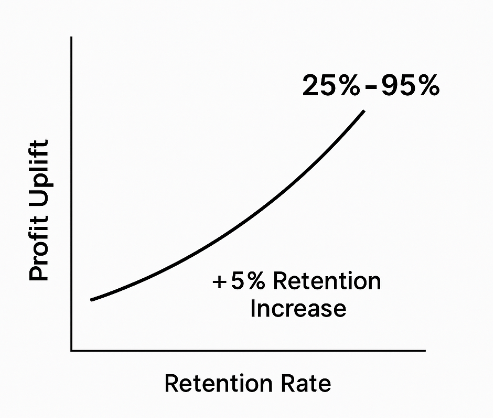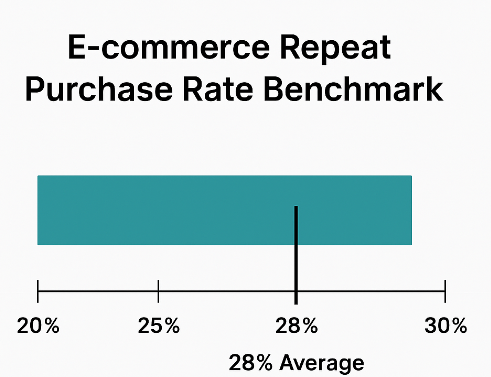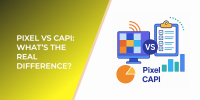Most advertising decisions are still made based on short-term performance metrics like 7-day ROAS or CPA. This approach misses the reality that a significant share of revenue often comes after the first purchase. Research shows that around 45–60% of total customer revenue happens beyond the initial transaction, making lifetime value (LTV) a more accurate measure of profit potential.

A 5% increase in customer retention can lead to 25–95% higher profits over time
When LTV is understood and segmented, brands can:
-
Bid more aggressively on high-LTV audiences.
-
Allocate budget to campaigns that build long-term revenue, not only short-term wins.
-
Improve forecasting accuracy.
-
Identify which products and customer cohorts drive the highest long-term returns.
How to Build a Practical LTV Model

Typical repeat purchase rate for e-commerce businesses: 20–30%, with an average around 28%
You don’t need an advanced data science team to construct a usable LTV model. Start with a few essential components.
-
Average Order Value (AOV)
A predictable indicator of how much buyers spend per purchase. -
Repeat Purchase Rate (RPR)
If your repeat purchase rate is 28%, for example, your LTV will significantly exceed single-purchase value. -
Purchase Frequency (PF)
Many ecommerce brands average 1.6–2.4 annual purchases per customer. -
Gross Margin (GM)
LTV must always be margin-adjusted. A campaign with a high LTV but low margin may still become unprofitable. -
Time-to-Repeat Window
If 72% of repeat purchases happen within 90 days, you can settle on a quarterly LTV cycle.
Basic formula:
LTV = AOV × Purchase Frequency × Gross Margin × (1 – Churn Rate)
Even this simple model can dramatically improve how you value your paid traffic.
Use LTV Segmentation for Smarter Ad Allocation
Different customer cohorts have different lifetime values. For example:
-
Customers acquired through remarketing often show 30–50% higher LTV compared to cold audiences.
-
Subscription buyers typically deliver 3–5× higher LTV.
-
High-margin product purchasers tend to show higher long-term value even if their first order is small.
Segment cohorts by:
-
Acquisition source (Facebook, TikTok, search)
-
Creative type
-
Funnel stage
-
Product purchased
-
Region or demographic
Then push more budget to segments with the highest long-term return.
Predictive LTV Improves Bidding Decisions
Platforms optimize for short-term conversion events, but your bidding strategy should incorporate long-term performance. For example:
-
If your predicted 90-day LTV is 2.8× higher than your 7-day ROAS, you can afford to scale spend even when short-term performance looks average.
-
Brands using predictive LTV models often report 20–35% improvements in overall paid acquisition efficiency.
Using LTV-based bidding can reveal profitable campaigns that traditional ROAS would classify as underperforming.
How LTV Modeling Helps Scale Profitably
When you know your true long-term return per customer, you can:
-
Identify the highest-value products to promote.
-
Justify higher CPAs in competitive auction periods.
-
Increase budget where long-term returns are strongest.
-
Reduce spend on low-LTV acquisition channels.
A strong LTV model gives you confidence to make bolder, data-backed ad decisions.

